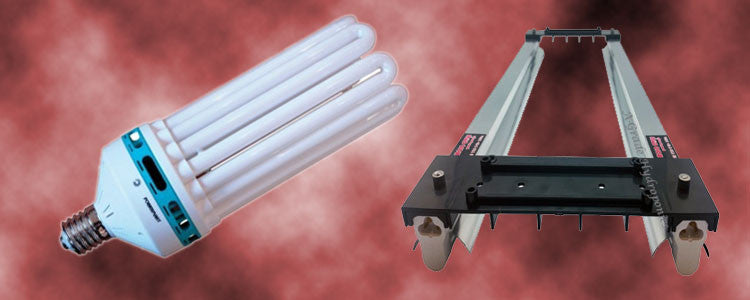Horticultural Lighting Guide – Part 1 – Grow Light Varieties – A-Grade Hydroponics

With so many different types of grow lights available to growers these days, it can be confusing trying to understand the purpose, pros and cons of each different type of lighting.
When choosing the right grow light or lights for your grow, there is several main categorizing factors you can look at when making your decision, although keep in mind these factors do not determine the quality of your grow lights (which we will get into in the next chapter of this lighting guide series) but are still important considerations, for example:
- The type of light to use – eg. HID, Fluorescent, LED, LEP, etc.
- Electrical power output of the light, measured in Watts
- Colour temperature, measured in Kelvins
On top of these factors of what type of grow light to use, you also need to consider the following:
- Size of your grow space
- Heating or cooling requirements
- Type of plants you will be growing
Horticultural Lighting Types
Here we will have a look at the most commonly used types of grow lights and how they differ.

High-Intensity Discharge (HID)
HID lights are the most popular type of serious horticultural lighting, consisting of many different varieties, such as:
- High-Pressure Sodium (HPS)
- Metal-Halide (MH)
- Ceramic Metal Halide (CMH) – AKA “Light Emitting Ceramic” (LEC)
HID lights are a type of electrical gas-discharge lamp that produces light by arcing electricity between tungsten electrodes inside a translucent fused quartz (Glass tube). These lights have a very high lumen-per-watt efficiency, although that doesn’t exactly correlate to a more effective grow light.
HID lamps are generally the largest power consuming light variety, produce the largest amount of heat, which is an important factor to consider when choosing your lighting, as you will generally need good ventilation to accommodate for these lights. HID lights are commonly found in 400 Watt, 600 Watt and 1000 Watt varieties and require a ballast to power each lamp.
The main two types of HID lamps you will find on the market for indoor growing are HPS and MH. The Metal-Halide (MH) lamps are more commonly used for early or vegetative growth phases as they generally produce a colour temperature that is best used for this phase, while the High-Pressure Sodium (HPS) lamps, generally produce a much different colour temperature which is best utilized for flowering/fruiting plants, but can also be used through an entire life cycle of a plant, unlike MH which is not very effective in the flowering/fruit phase of plants.

Fluorescent Lighting
Fluorescent horticultural lighting generally is found in two main forms:
- Fluorescent Lamp
- Fluorescent Tube
A Fluorescent light is a low-pressure mercury-vapour gas-discharge lamp that utilizes fluorescence to produce visible light. This method of producing light has low energy requirements and generally looked at as being a cheap and energy efficient way to grow plants, as these lights are typically inexpensive to purchase and have low energy requirements, resulting in lower heat production.
In horticulture, Fluorescent lighting is often found as either a CFL, T5, or T8 fluorescent tube, most commonly only used for smaller, young plants or propagation, although the more general Compact Fluorescent Lamp (CFL) variety of lighting that can be used through an entire plants life cycle with the right colour temperature.
The fluorescent lighting varieties are generally found to be around the 80-130Watt range depending on the lamp type used and are efficient for smaller or younger plant growth, but significantly less effective for larger, flowering or fruiting plants.

Light-emitting Diodes (LED)
LED Lighting is quickly becoming the gold standard of horticultural lighting as its able to offer a full range of colour temperature, covering a large area and requiring very little electricity compared to HID lighting. LED lighting also produces very little heat compared to HID lights, making them a great, low energy cost, low heat lighting for growing anything. The one current downside to LED lighting is their initial cost of purchase is generally much more than any of the other lighting varieties.
An LED is a two-lead semiconductor light source, when applying a voltage to the leads, electrons will release energy in the form of photons, causing an effect called electroluminescence, releasing a colour of light corresponding to the energy of the photons released.
On the market today, LED lights are usually built with controllers to allow the grower to select the specific colour temperature they wish to utilize to have the most efficient grow from seed to harvest with just a single light.




